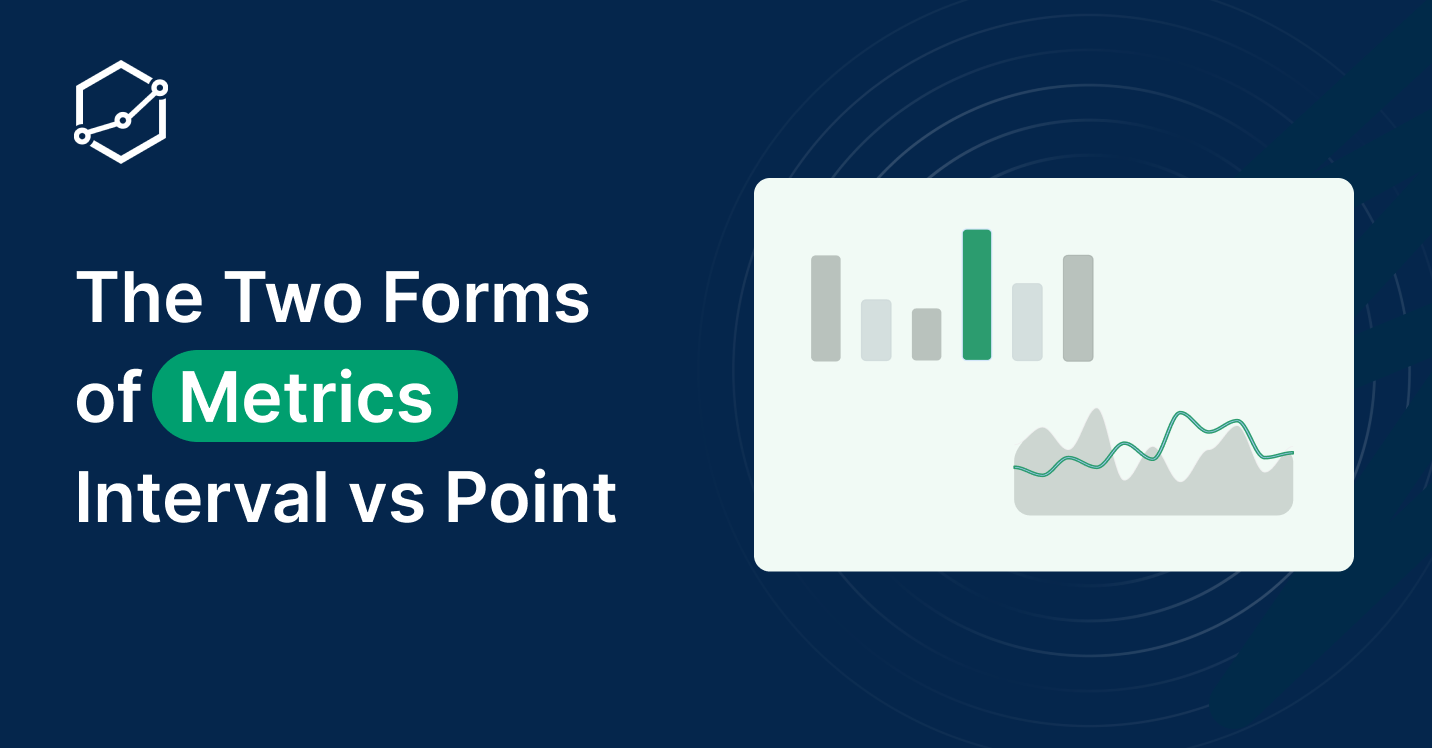The Two Forms of Metrics: Interval vs Point
In actual business conversations, the metric's form is sometimes ignored and implicitly understood. Understanding this concept gives you much better clarity in dealing with metrics.

As a data analyst, how would you respond to these two simple data requests?
- “What’s our revenue last month?” (e-commerce business), vs
- “What’s our MRR last month?” (SaaS business)
The first question is fairly simple, you take all orders generated last month (30-31 days) and sum their sales:
SELECT SUM(sale_total) FROM orders WHERE order_date::month == '2023-10'But for the second question, we actually have two ways to interpret (and calculate) this:
- Take the company’s MRR at the very end of last month, or
- Sum all the new recurring deals that happened last month.
If you run a SaaS business, you know instantly that “MRR last month” refers to option one. Option two gives you “Net MRR Growth last month", which is likely not what the business user asked for.
But why is MRR's form of calculation different from Revenue's calculation above? Aren't they supposed to be the same? What caused this difference?
This is because of a concept I call the two forms of metrics. The interval vs point forms.
- A metric’s interval form is one that goes with a specific time period (day, week, month, or any custom time period).
- A metric’s point form is one that goes with a specific point in time: end of month, beginning of year, end of year, etc.
In actual business conversations, the metric's form is sometimes ignored and implicitly understood. Understanding this concept will give you much better clarity in dealing with metrics (and of course, business stakeholders).

Here's a few interesting attributes about these 2 forms of metrics:
1- Some metrics are implied in one form over the other. For example, “active users” metric is an interval form metric, “MRR” is commonly used in point form.
2- Some metrics only take one form. For example, “active users” only makes sense in its interval form (daily active, weekly active, 7-day active, etc). Their point form is virtually non-existant.
3- A metric can make sense in both point form and interval form. An investor asking a founder "What's your business's revenue?" can be answered with "all time revenue", or "most recent month's revenue". The first example in this post demonstrates the interval form of revenue. Its point form counterpart is: “What’s our all-time revenue until the end of last month?”
4- A metric’s point form is usually the cumulative version of their interval form (span from the beginning of time):
Revenue (at t) = Revenue [begin, t]5- Here’s a table of a few sample metrics, alongside their interval and point forms:
| Metrics | Interval Form | Point Form |
|---|---|---|
| Revenue | Revenue for month X | Cumulative revenue at time T |
| MRR | (Less common) | MRR at time T |
| Active Users | DAU, WAU, MAU | (Not applicable) |
| Conversion rate | The conversion rate for month X | (Less common) |
This simple concept has helped me multiple times when talking to my business colleagues. It gives me the conceptual vocabulary so that when I hear a request from a user, I can instantly classify them, and ask follow-up clarification if necessary.
Hopefully you'll find it useful as well.
Interested in hearing more about practical advice or thoughtful take on contemporary BI practice? Check out our related blog post:
What's happening in the BI world?
Join 30k+ people to get insights from BI practitioners around the globe. In your inbox. Every week. Learn more
No spam, ever. We respect your email privacy. Unsubscribe anytime.

